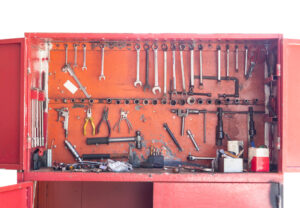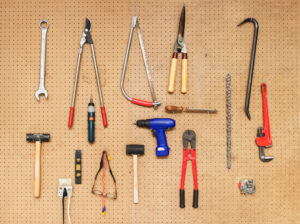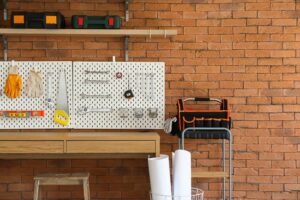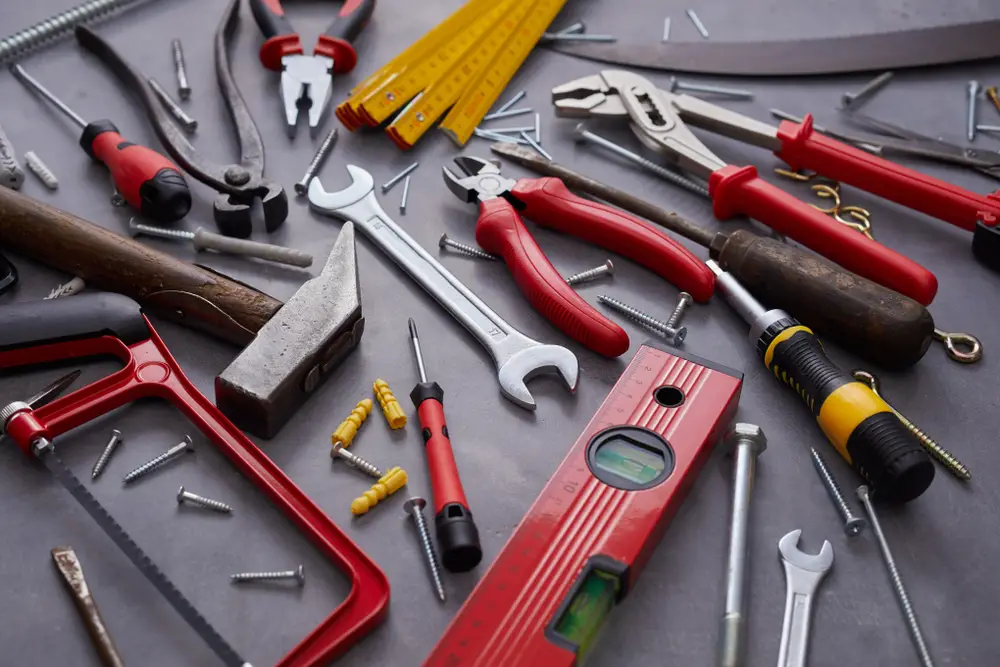
Organising hand tools is a personalised process that depends on an individual’s specific space and needs. Whether you’re a woodworker, home renovator, or hobbyist, there are several clever ways to sort and label your tools.
Key Takeaways:
- Thoroughly inventory and categorise your tools before organising them.
- Customise storage spaces to maximise efficiency and accessibility.
- Consider open-concept storage solutions for easy access to your tools.
- Utilise vertical storage options to keep work surfaces clear and tools visible.
- Maximise storage space by using additional storage options in your workshop.
Thorough Inventory and Categorisation of Tools
Before embarking on the task of organising your hand tools, it is crucial to conduct a thorough inventory and categorise them effectively. By grouping similar tools, you can gain a clearer understanding of what you have and determine the most suitable storage solutions. Start by sorting your tools into categories such as power tools, small hand tools, and specialised equipment.
Creating categories will not only streamline the organisation process but also help you plan for the appropriate storage options. For example, power tools might require a designated cabinet or wall-mounted storage system, whereas small hand tools can be easily stored in toolboxes or drawers. Categorisation allows you to visualise the different types of tools you own and allocate specific spaces for each category.
To further enhance organisation, consider labelling each tool category. This simple step will save you time and effort in the long run, as it enables easy identification and quick access to the tools you need. Invest some time in creating clear and legible labels for your tool storage, using either adhesive labels or a labelling machine.
| Tool Category | Storage Solution |
|---|---|
| Power Tools | Wall-mounted storage system or designated cabinet |
| Small Hand Tools | Toolboxes or drawers |
| Specialised Equipment | Dedicated racks or shelves |
Customising Storage Spaces for Effective Organisation
When it comes to organising your workshop, customising your storage spaces is key to achieving effective organisation. By tailoring your storage solutions to your specific needs, you can create an efficient workspace, clutter-free, and maximise your productivity. Here are some tips for customising your storage spaces:
Create Dedicated Storage Spots
An effective way to customise your storage spaces is to build workbenches or cabinets with designated storage spots for your tools. Having specific compartments for different types of tools makes it easier to find and return them after use. Consider adding drawers, shelves, or even small bins within your workbench or cabinet to keep everything neatly organised and within reach.
Utilise Wall Space with Pegboard or Slat Walls
Another great way to customise your storage spaces is by using pegboard or slat walls. These versatile systems allow you to hang your tools, making them easily accessible and visible. Install a pegboard or slat wall on an empty wall in your workshop and use hooks, shelves, and baskets to organise your tools. This way, you can optimise your vertical space and keep your work surfaces clear.
Label and Group Similar Items
Labelling and grouping similar items is an effective way to customise your storage spaces and maintain an organised workshop. Use labels or colour-coding to identify different categories of tools and materials. For example, you can have a section for power tools, another for hand tools, and a separate area for accessories. This will help you quickly locate the items you need and ensure that everything is returned to its proper place.
Open-Concept Storage for Easy Access
When it comes to organising your hand tools for easy access, open-concept storage is a highly effective solution. By utilising a slat wall system on a blank wall in your workshop, you can hang your tools using hooks, keeping them within reach and visible at all times. This not only maximises the use of space but also ensures that you can easily find and retrieve the tools you need for any DIY project.
In addition to hanging tools, you can also incorporate bins and transparent plastic containers into your open-concept storage setup. These containers are ideal for storing smaller items like screws, nails, and other accessories. The transparent design allows you to see the contents of each container, making it easy to locate specific items when required. By labelling each container, you can ensure that tools are returned to their designated spot, maintaining organisation and facilitating quick access in the future.
To illustrate the benefits of open-concept storage, let’s take a look at the following table that compares this method with traditional closed storage solutions:
| Open-Concept Storage | Traditional Closed Storage | |
|---|---|---|
| Accessibility | Easy access to tools | May require searching or rummaging |
| Visibility | Tools are visible at all times | Tools may be hidden or difficult to locate |
| Space Utilisation | Maximises use of vertical and wall space | May have limited storage capacity |
| Organisation | May require extra effort to maintain the organisation | May require extra effort to maintain organisation |
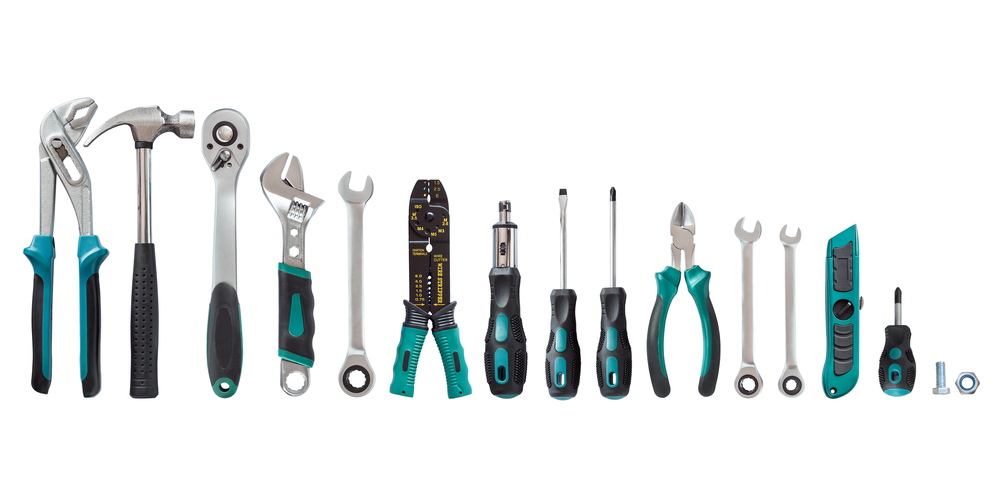
Vertical Storage Solutions
When it comes to organising your workshop, vertical storage solutions offer a practical and space-saving approach. By utilising the walls effectively, you can keep your work surfaces clear and ensure easy access to your tools. There are several options available for vertical storage, which can help you optimize your workshop layout.
1. Slat Boards and Pegboards
Slat boards and pegboards are versatile options for vertical storage. These boards can be easily mounted on the walls, providing a grid-like structure for hanging tools using hooks. By arranging your tools on the boards, you can keep them within reach and visually organised. It’s also convenient to rearrange the hooks and tools as your storage needs change over time.
2. Vertical Strips with Anchor Hooks
Vertical strips with anchor hooks offer a sturdy solution for hanging heavier tools. These strips can be attached to the walls, providing a secure and reliable way to store your tools vertically. With the ability to adjust the height of the hooks, you can customise the storage space to accommodate tools of different sizes.
3. Magnetic Strips
Magnetic strips are ideal for storing smaller hand tools such as screwdrivers, wrenches, and pliers. By attaching a magnetic strip to the wall, you can keep these tools within easy reach and prevent them from getting lost in drawers or cluttered toolboxes. This vertical storage solution offers a convenient way to display and access your frequently used tools.
By incorporating vertical storage solutions into your workshop, you can optimize space and keep your tools organised. Whether you choose slat boards, vertical strips, or magnetic strips, these options provide easy access to your tools while maximising your work area. Experiment with different arrangements and find the system that works best for you.
| Pros | Cons |
|---|---|
| Maximises vertical space | May require installation on walls |
| Keeps work surfaces clear | Some tools may not be suitable for hanging |
| Allows for easy access to tools | Requires planning and organisation |
Maximising Storage Space with Additional Options
When it comes to organising your workshop, maximising storage space is key. By utilising additional storage options, you can make the most of every nook and cranny in your space. Here are a few ideas to help you maximise your storage potential.
Utilise the End of Cabinets or Workbenches
Don’t overlook the ends of your cabinets or workbenches – they can be valuable storage areas. Install hooks or pegboards on the sides of cabinets to hang frequently used tools like screwdrivers or pliers. This keeps them easily accessible while freeing up space on your work surfaces.
Add Clear Plastic Totes for Awkwardly Sized Items
Awkwardly sized items can be a challenge to store, but clear plastic totes can be a great solution. Place these totes on open shelving units and label them accordingly. This way, you can easily see and retrieve items like clamps, sandpaper, or spray paint cans, while still maintaining an organised space.
Label, Label, Label
One of the keys to effective organisation is labelling. Whether you’re using drawers, containers, or shelves, be sure to label everything. This not only helps you quickly find what you need but also ensures that tools are returned to their designated spots. Consider using a label maker or adhesive labels for a professional and consistent look.
By implementing these additional storage options, you can maximise the storage space in your workshop and keep your tools organised. Remember to customise your storage solutions to fit your specific needs and make use of every available space. With a well-organised workshop, you’ll be able to tackle your DIY projects with ease and efficiency.
Conclusion
In conclusion, effective sorting and labelling of hand tools are crucial for maintaining a well-organised workshop. By implementing the tips provided in this article, you can simplify your DIY projects and ensure easy access to the tools you need.
Customising your storage spaces according to your specific needs will maximise efficiency and make it easier to locate and retrieve your tools. Open-concept storage solutions, such as slat walls and transparent containers, offer easy accessibility while maintaining a clutter-free workspace.
Vertical storage options, like pegboards and magnetic strips, not only save valuable work surface space but also enhance visibility, ensuring that tools are never forgotten or misplaced. Additionally, maximising storage space by utilising end cabinets and clear plastic totes will further enhance organisation and efficiency.
Investing time in organising your hand tools will undoubtedly lead to a more enjoyable and efficient DIY experience. With a well-organised workshop, you can focus on your projects with ease and save valuable time searching for tools. So, start implementing these tips today and experience the benefits of a tidy and productive workspace.
FAQ
How should I sort and label my hand tools?
It’s important to do a thorough inventory and categorise your tools. Group similar tools together, such as power tools, small hand tools, and specialised equipment. This will give you a clear idea of what you have and help you plan for storage solutions.
How can I customise my storage spaces for effective organisation?
Consider building workbenches or cabinets with specific storage spots for your tools. Use pegboard or slat walls to hang tools and create enough surface area for storage. Customisation allows for easy access and ensures that each tool has its designated place.
What is open-concept storage and how can I utilise it?
Open-concept storage involves installing a slat wall system on a blank wall to hang tools using hooks. Utilise bins and transparent plastic containers for storing smaller items, maximising the use of space without sacrificing accessibility. Labelling containers will ensure that tools are returned to their proper place for easy access.
How can vertical storage solutions help me keep my tools organised?
Vertical storage is an effective way to keep work surfaces clear and prevent tools from being forgotten or misplaced. Use slat boards, pegboards, or vertical strips with anchor hooks to hang tools on the walls. Magnetic strips can be used for smaller tools. Vertical storage solutions increase visibility and make it easier to find and retrieve tools when needed.
How can I maximise storage space with additional options?
Make use of every available space in your workshop by adding extra tool storage options. Utilise the end of cabinets or workbenches to store commonly used tools like screwdrivers. Consider adding clear plastic totes on open shelving units to organise awkwardly sized items. Labelling each container enhances organisation and ensures tools are returned to their designated spot.
- Drill Battery Maintenance: Essential Tips for Cordless Drill Battery Care - February 5, 2024
- Troubleshooting Drill Issues - February 5, 2024
- Quick Drilling Techniques - February 2, 2024


